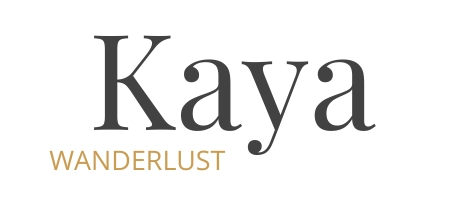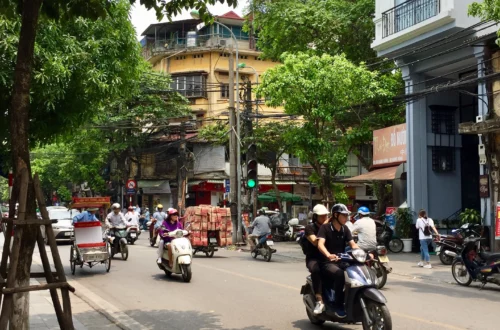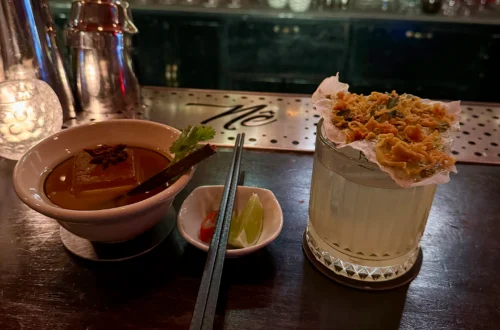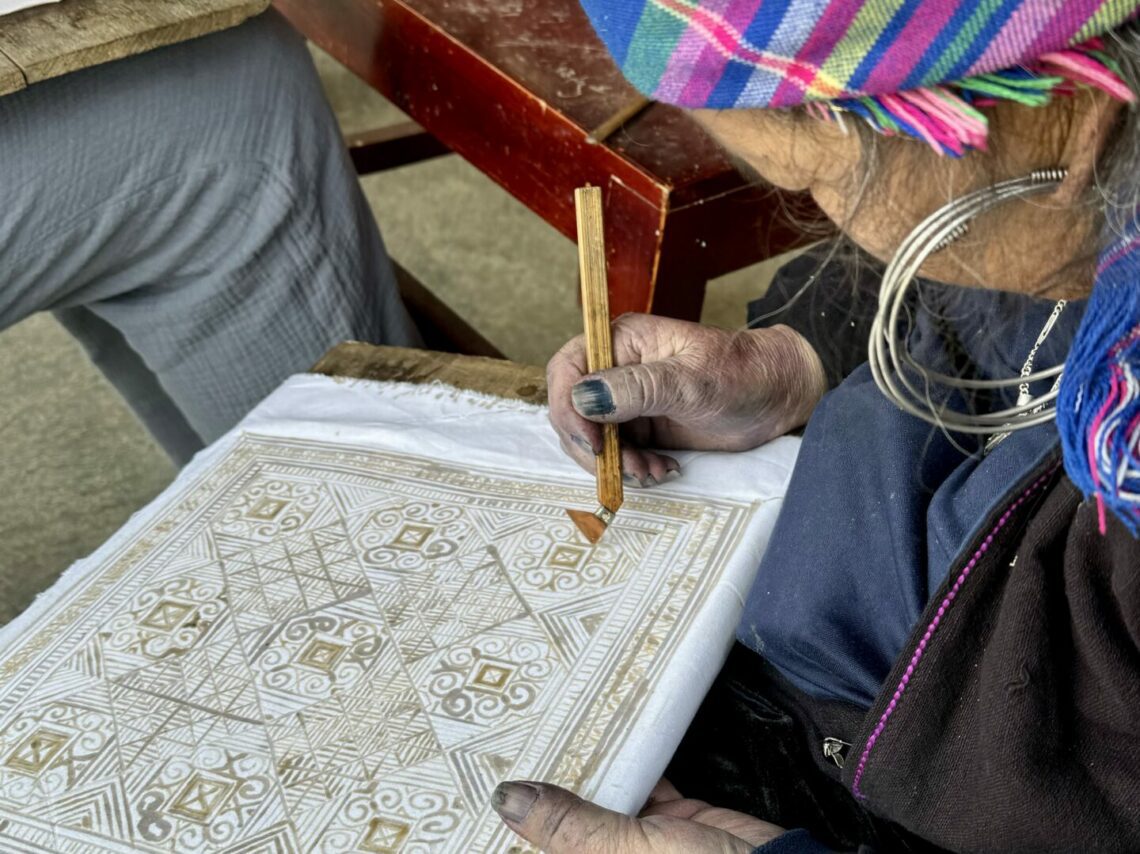
Hmong Batik Workshop – Sapa
While in Sapa I divided my time between the city and a homestay with a Hmong family, in Ta Van village near Sa Pa. They offer half-day and full-day trekking tours as well as an ethnic handicraft workshop with Hmong Indigo Batik and Traditional Hmong Embroidery.
History of Indigo Batik in the Hmong tribe
Before the workshop started, Sue (the homestays owner) explained the process and how the Hmong started with Batik: The people who went into the forest to collect honey came across forests of Indigo and got caught in wax and indigo, which turned their clothes black. When their clothes were washed the wax came away and the original white colour was left on those pieces of cloth, while the rest turned blue. The Hmong people thanked the bees for this discovery and to this day patterns of bees are drawn onto the traditional dress.
Indigo Batik Workshop
To create the pattern you first have to melt wax over a small fire and flatten the cloth with a hot and smooth item to turn it into a smooth canvas – although it is not made from canvas, but from hemp. I could choose to learn how to create the traditional symbols and patterns of the Hmong or do my own design. I chose the traditional one. If given the chance to learn a tradition that has been carried on for generations you have to take the chance.
It is very complicated at first since you have to make sure the wax is neither too hot nor too cold, you don’t have too much or not enough on your tracing tool. It was also hard for me to trace straight lines, which made me admire the skill even more.
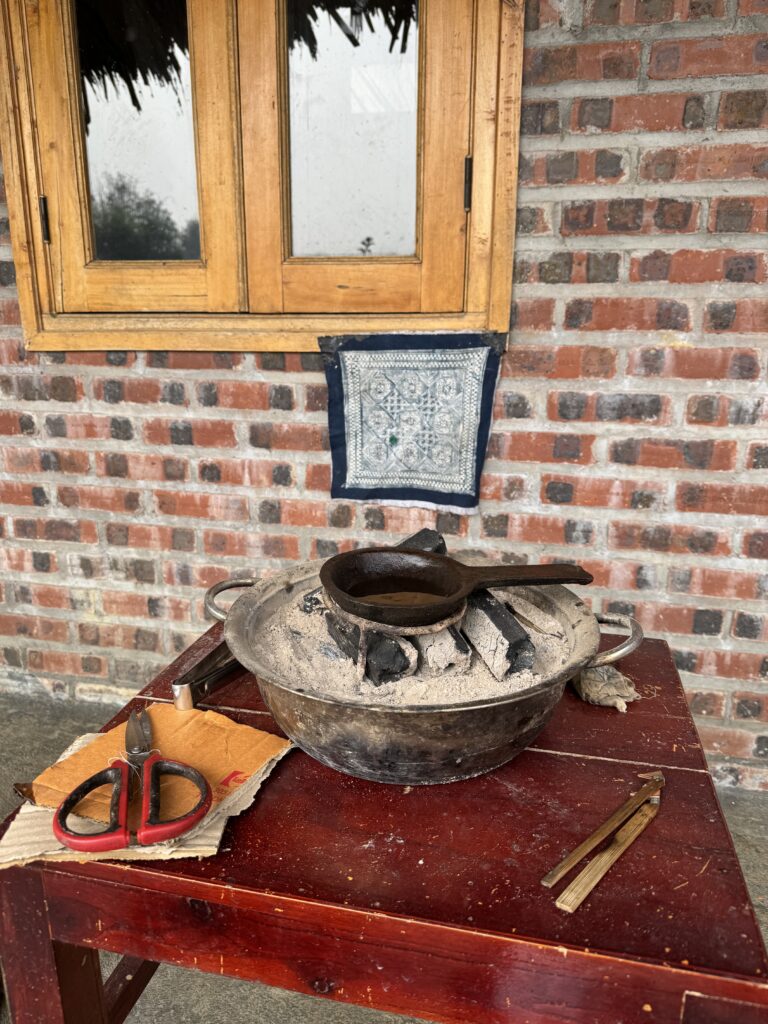
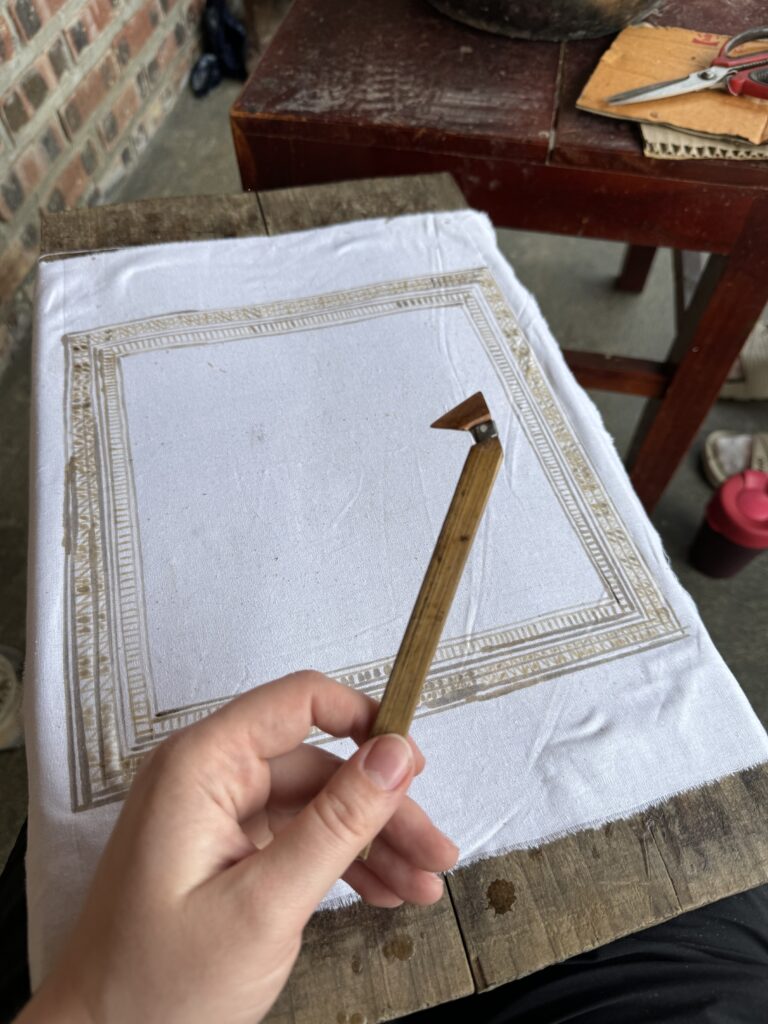
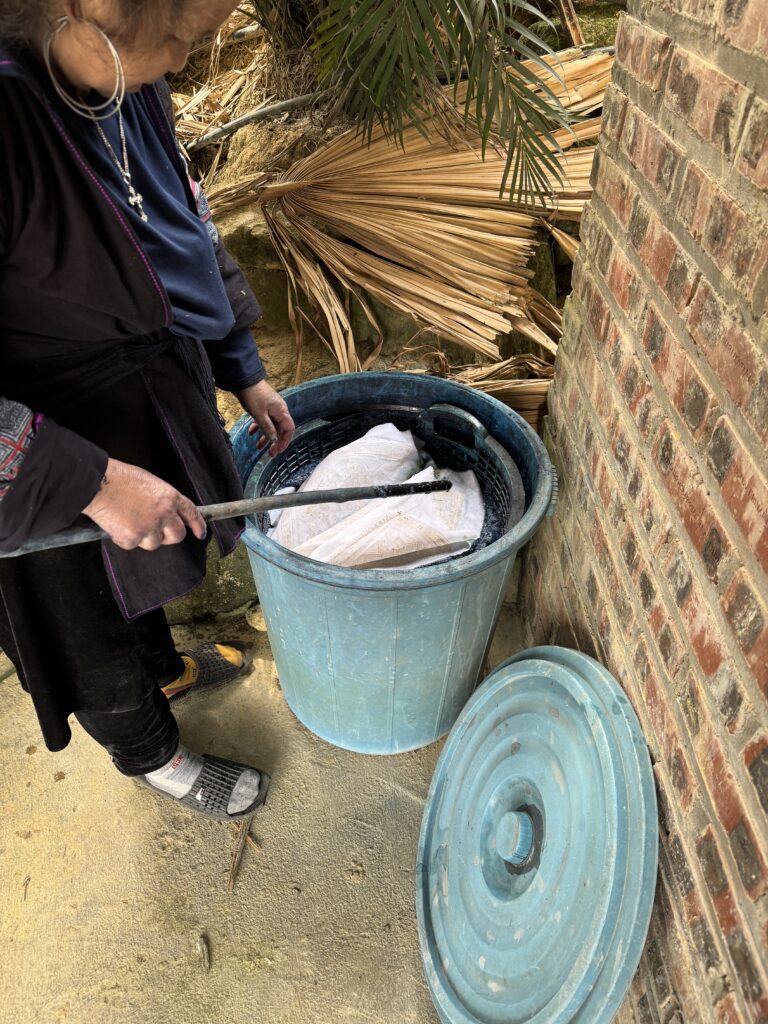
Since Sue had broken her wrist a few days before my arrival her mother taught me, like she had taught her daughter and granddaughters before. She didn’t speak much English besides “Yes. No. Too hot. Too much.” but that was no problem at all since it was a very hands-on activity. And while the younger generations are happy that some… less body-autonomy-positive traditions are changing, it felt special to share in one that is still practised today.
Once the design is complete the cloth is dipped into an indigo dye vat. It has to be dipped, left to soak, hung up to dry somewhat, and then dipped again. This process has to be repeated a few times.
Finally (usually in the evening or the next day) the wax is boiled out of the cloth, a process that also sets the colour. Then it is hung up to dry, which takes a few hours, but can take several days, depending on the air humidity.
While the cloth was dying we had an enormous portion of fried rice for lunch and a Vietnamese Coffee.
Traditional Hmong Embroidery
After the cloth had been hung up to dry Sue’s daughter Mai showed me how to do a traditional flower pattern on a slip of embroidery cloth. It looked a lot easier than it was ^^
It took me almost 3 hours to do six of the other flower shapes. Mai told me that the Hmong girls start learning how to embroider by the age of eight, some even earlier.
In the end, when three tour groups had arrived and it was time for dinner she offered that she or her sister-in-law finish it for me. I thanked her and agreed. I don’t think I could have finished it in the next two days I was still staying with them either way.
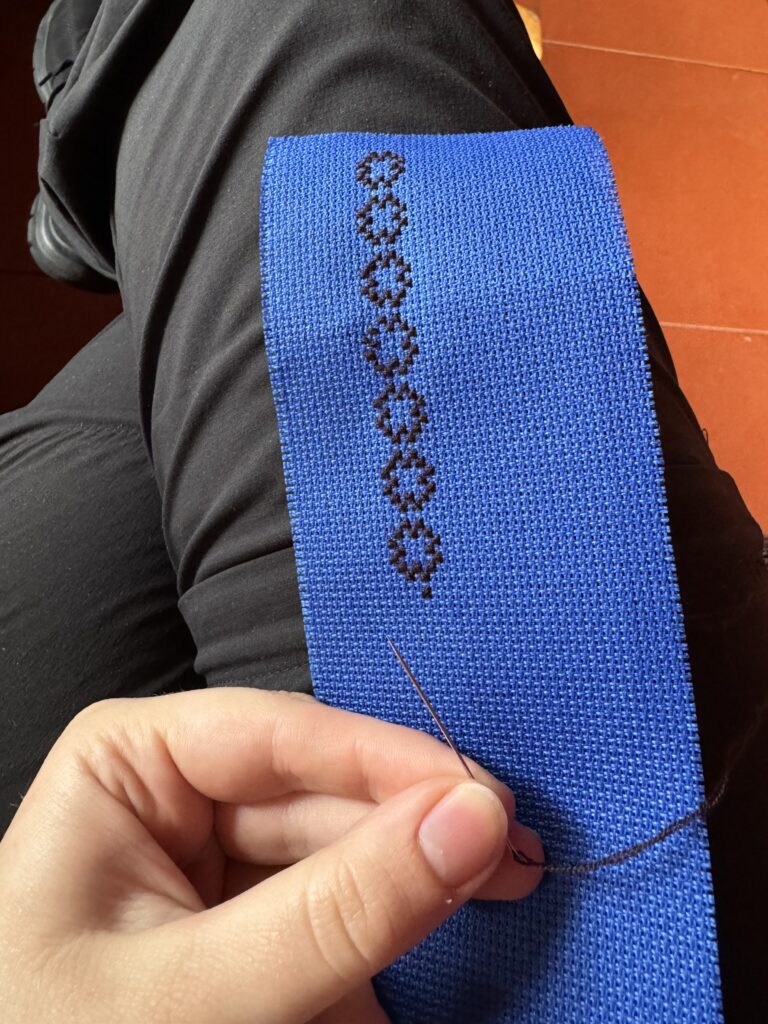
Where to book the Hmong Batik Workshop in Sapa?
If you are interested in ethnic crafts and culture and are in Sapa I can recommend this workshop on Tripadvisor* (this is the exact workshop I did and described here, 6h including lunch and drink)! If you stay stay at her homestay, you can just ask about it once you arrive and pay in cash for a different price (without commission).
Or if you are staying somewhere else and are only interested in the batik you can book a similar workshop here with Sapaweather, 2 – 2.5 hours.


